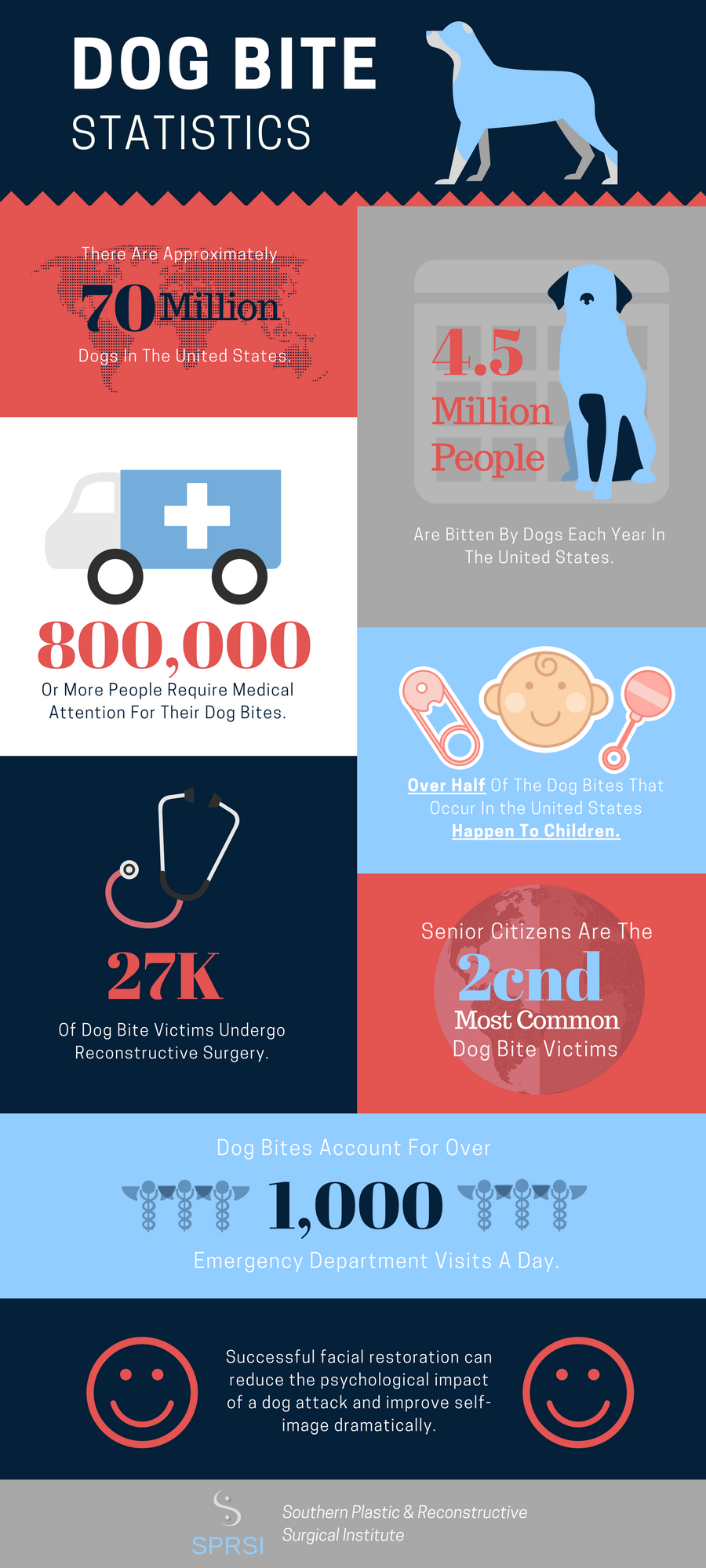How Surgery Can Restore Your Face After a Dog Attack
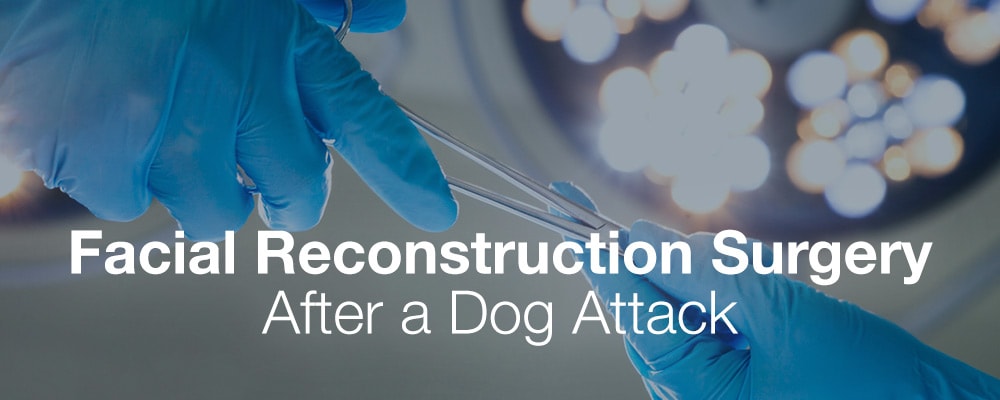
Facial Reconstruction Surgery After a Dog Attack
Dog bites affect more than 4.5 million people each year, with the face and hands being the most frequently bitten areas of the body. Among this group, children and seniors are the most affected. Facial reconstruction surgery, also called restorative surgery, is available to repair damage, restore function, lessen scars, alleviate infection and restore the appearance and confidence of serious dog bite victims. A variety of treatments can restore facial appearance after a dog bite.
Types of Injuries Dog Bites Cause
Dog bites can cause many different types of injuries to the skin and underlying tissue. While some are superficial and can be treated at home, others are more serious and require immediate medical treatment to prevent infection, scarring, and disease. Damage to the nerves, tendons, bones, and muscles of the face often requires surgery to repair and restore their normal function. These injuries commonly involve the face, hands, head, and neck areas. Here are the most common types of dog bite injuries.
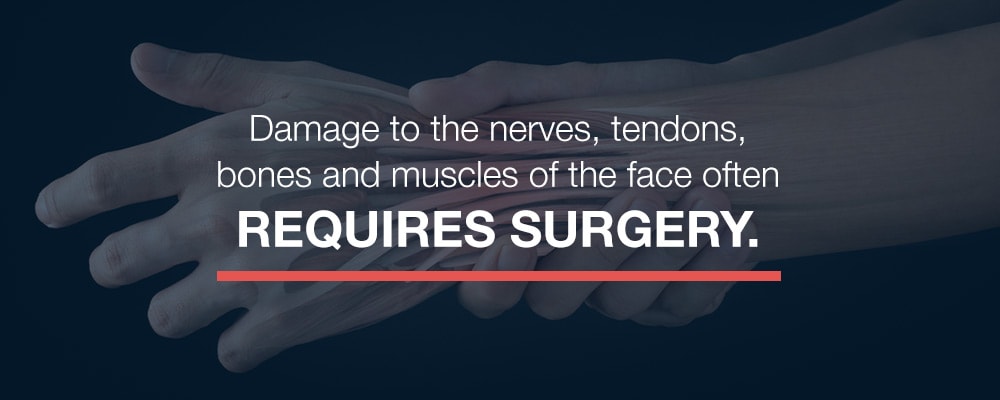
- Abrasions — Abrasions, such as scratches and cuts, are the mildest form of dog bite. While you can usually treat these superficial wounds at home without professional medical help, they are still at risk for infection and disease transmission.
- Lacerations — Lacerations are deep, open cuts that often appear irregular and torn. Lacerations often cause excessive bleeding and may require stitches.
- Punctures — Puncture wounds occur when a dog’s teeth pierce the skin. Dog bite punctures are at high risk of becoming infected and usually require antibiotic treatment.
- Crushing — Dog bites can cause crushing wounds to bones and tissue. Bone fractures and breaks often result from crushing injuries that mostly occur in larger and stronger dog breeds.
- Avulsion — This is the most severe type of dog bite wound, where tissue and other facial features get partially or completely torn away from their normal location. Torn skin and muscle often resemble hanging flaps. Avulsion wounds from dog bites are the ones that frequently require reconstructive surgery.
How Facial Surgery Can Restore Your Face After a Dog Attack
Surgery can reconstruct disfigured facial features. While most times, the doctor performs the surgery shortly after the bite, there is sometimes a waiting period due to the risk of infection setting in if the wound gets closed immediately. To prevent infection, a doctor may give a tetanus shot and antibiotic treatment directly following a dog bite. Reconstruction procedures such as skin grafting, flap surgery, and scar revision often take place after the initial wound has been treated and loosely sutured.
When undergoing facial reconstruction surgery after a dog attack, it’s important to know what to expect. It may require multiple procedures to restore regular facial appearance and function. Depending on the extent of the wound, different specialists may get involved in the reconstruction process. Physicians and surgeons who specialize in tendon and nerve repair, plastic surgery, dental treatments and other areas can restore appearance and function in areas such as the eyes, mouth, tendons, nerves, and muscles. Although scars are inevitably permanent, breakthrough advances in scar treatment like laser technology, injectable fillers, micro-needling, and dermabrasion serve to greatly lessen their appearance.
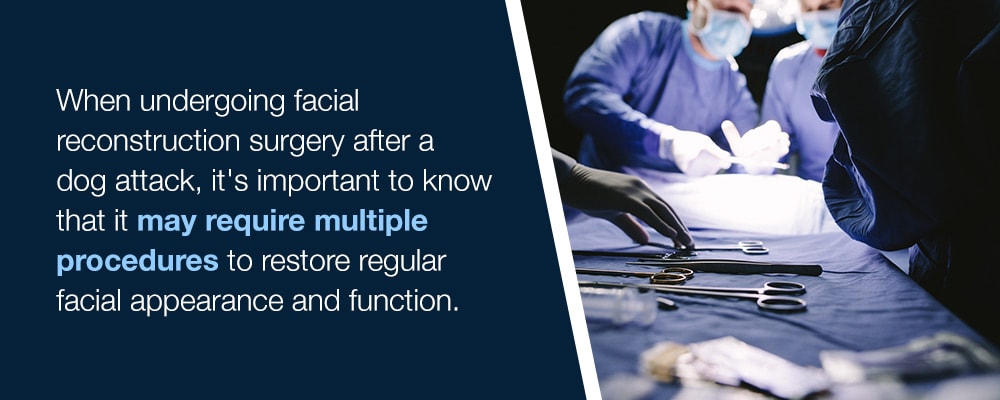
Benefits of Facial Reconstruction Surgery
After a dog bite, facial reconstruction surgery can restore a patient’s facial features. It can repair damage from tearing and crushing injuries and rebuild damaged and displaced areas. Grafting and surgery can replace missing skin and tissue. There are both physical and psychological benefits of facial reconstruction surgery after dog bites, which not only help repair damage and restore a patient’s physical appearance, but also their confidence and well-being.
Here are some benefits of face surgery after dog bites.
- Restoration of function in damaged areas — Reconstruction surgery can restore the function of facial areas such as the nerves, muscle, and tendons. It may be necessary to reshape the support structures of the mouth, nose, and ears to allow the patient to eat, speak, breathe, and other functions.
- Restoration of appearance — A plastic surgeon can reshape and rebuild areas of the face, such as the lips, cheeks, nose, and eyes, that have been lost or damaged by a dog bite using a variety of treatments. In combination with other procedures such as filler injections to fill skin depressions and laser treatment for scar revision, facial reconstruction surgery can reverse many of the disfiguring changes that occurred as a result of the attack.
- Alleviation of attack trauma — Dog bite victims may suffer trauma from the incident itself, compounded by the emotional trauma of being disfigured. Many dog bite victims can develop psychological issues such as PTSD and depression. Restoring the appearance of the face removes the constant reminder of the attack and helps the patient begin to recover emotionally and psychologically.
- Reduction of the appearance of unsightly scars — Although scarring is permanent, advances in both surgical and non-surgical scar revision treatments can drastically reduce their appearance.
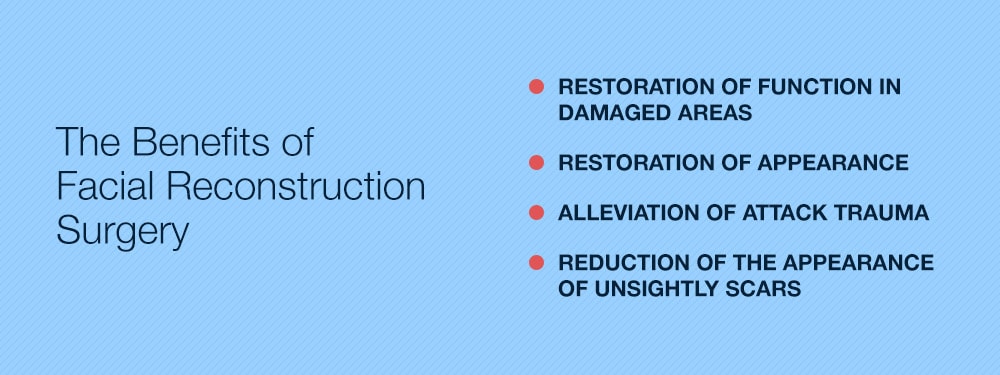
Who Is a Good Candidate for This Surgery?
Reconstructive plastic surgery is a good option for people with facial deformities caused by an accident or trauma such as a dog attack. For facial reconstruction to be successful, candidates should be in good overall health, have a positive outlook and realistic expectations about the outcome of their surgery and other associated treatments.
Characteristics of a good candidate include patients who:
- Are nonsmokers
- Have no serious medical conditions such as connective tissue disease, decreased circulation or conditions that may impair healing
- Practice good nutritional habits
- Have a strong immune system
- Have no skin damage due to radiation therapy

Commonly Performed Treatments for Dog Bites
Doctors use a variety of surgical procedures when treating dog bites. These include reconstructive procedures to remove and reform damaged tissue, grafting procedures to grow new tissue and skin resurfacing procedures to lessen the appearance of scars. The many advances in treatments for dog bites have allowed injuries that may have once been permanently disfiguring to be hardly noticeable.
These include:
- Surgery for infection — Although rare, sometimes surgery is necessary to alleviate an infected dog bite wound. If the wound has developed cellulitis or has become abscessed, it needs to be opened and the dead tissue removed, followed by antibiotic treatment.
- Primary and secondary reconstruction surgery — Primary reconstruction surgery takes place immediately after the injury and helps reconstruct the shape of the damaged and lost tissue. If this surgery does not produce the desired results, secondary reconstruction surgery may be necessary.
- Flap reconstruction — This procedure involves moving skin, muscle and bone tissue with an intact blood supply from one area of the body to another.
- Cartilage, fat and skin grafting — Grafting procedures involve harvesting tissue from one area of the body and relocating it to another. In dog bite victims, skin grafting replaces lost or torn skin, while cartilage grafting replaces lost and damaged areas such as the nose and ears. Fat grafting involves the injection of harvested and cleaned fat into depressed or hollowed areas of the skin.
- Debulking — When scarred skin thickens, causing keloid and hypertrophic scars, doctors can surgically thin or “debulk” it.
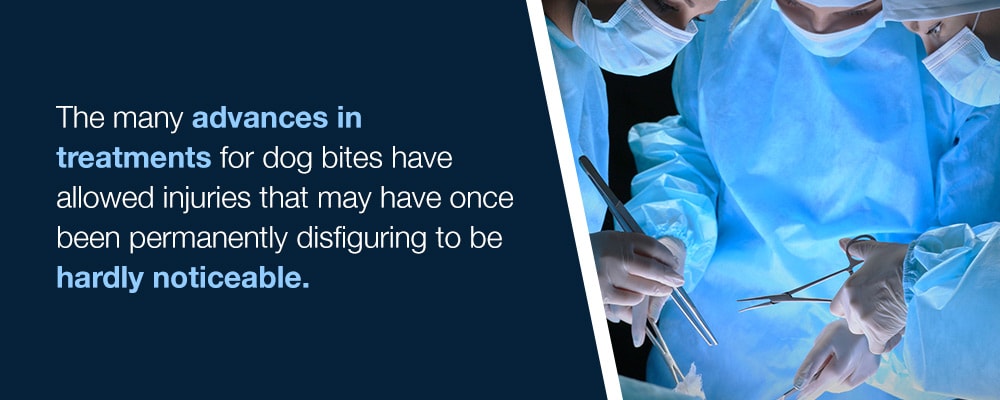
Things to Consider With Facial Surgery After a Dog Attack
When contemplating having facial surgery after a dog attack, there are many factors to weigh. Although surgery can correct a patient’s appearance, it sometimes takes multiple procedures and a good amount of time to achieve the desired results. It is common for facial reconstruction patients to experience emotional issues as they deal with their changing appearance. While surgical procedures can give dog bite patients a more normal appearance, scars will usually remain and may need subsequent revision treatment.
Other factors to keep in mind include:
- Having to wear bandages for several weeks and restrict activity
- Having to take several weeks off of work
- Needing an extended hospital stay
- Needing an assistant to help with everyday activities
- Not being able to drive until a surgeon approves it
As with all surgeries, there are certain risks associated with facial reconstruction surgery. These include:
- Infection
- Excessive bleeding
- Bruising
- Anesthesia issues
- Surgical complications
- Problems with wound healing
Since all patients differ in their healing ability and anatomy, not everyone can expect the same outcomes and experiences. Following all physician’s orders is key to avoiding many of the risks and side effects of facial reconstruction surgery.
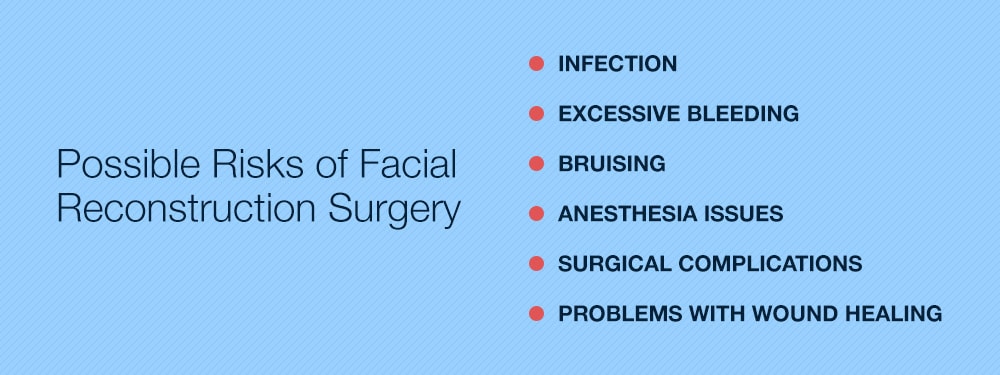
Costs of Surgical Procedures
Although standard health insurance policies usually cover immediate treatment and facial surgery after a dog bite, plastic surgery procedures that are more aesthetic than medical might not be. In most cases, homeowners’ insurance policies cover dog bite treatments and procedures. When making a liability claim for a dog bite, it’s important to remember there may be follow-up treatments in the months and years ahead. Plastic surgeons such as Dr. Brought can outline a treatment protocol and determine long-term medical expenses and costs. Even if insurance pays for the majority of the plastic surgery, a patient may incur additional out-of-pocket expenses.
Associated costs of facial reconstruction surgery may include:
- Medication fees
- Surgical center or hospital fees
- Surgeon’s fees
- Lost wages due to missed work
In certain cases, patients must seek an attorney’s assistance to receive compensation for dog attacks.
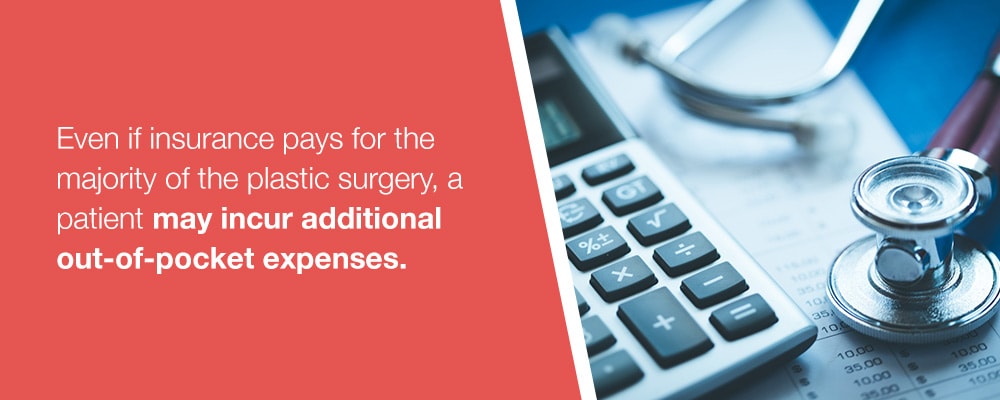
Facial Reconstruction Surgery Recovery After Dog Bite
The recovery time needed after facial reconstruction surgery from a dog bite varies from patient to patient and hinges on a range of factors, including the extent of the injury and how invasive and complicated the surgery is. Some patients require an extended hospital stay, while others can recuperate at home. Some facial reconstruction patients must wear bandages and dressings for several weeks to decrease the risk of infection and allow wounds and incisions to heal. Other patients may require a helper to perform daily tasks such as eating and drinking. Following all postsurgical guidelines and instructions is imperative to having a successful recovery.
Things that are important to know during recovery from facial reconstruction surgery include:
- Swelling and bruising are common following surgery and will subside within a few weeks.
- Rest when tired and sleep with your head elevated.
- A soft diet may be necessary after oral surgery.
- Keep hydrated with plenty of fluids.
- Take all medications, including antibiotics and pain medicine, exactly as directed by your doctor. Don’t restart or add any medications without their direction.
- Keep incision areas clean and follow your surgeon’s instructions for wound cleaning and dressing.

The time it takes for scars to heal depends upon the initial injury, the type of surgical procedure and each patient. Everybody heals at a different pace. Factors such as nutrition, general health, smoking status, following of postsurgical instructions and the way the body forms scars all play into how quickly a scar heals or fades. Wounds and incisions in the facial area usually take several weeks to several months to heal, with scars fading over several months or years. While surgical methods result in improvements to dog bite wounds, non-surgical remedies that encourage healing and recovery are also helpful.
These include:
- Application of topical creams as instructed by your surgeon
- Scar massage to increase blood flow to and improve the appearance of the area
- Use of silicone sheeting over the incision site to drastically reduce the texture, color, and height of scars and protect the site from bacteria which can cause infection and keloid scarring
Schedule an Appointment
If you have suffered a dog attack on your face or neck, plastic surgery may reduce or eliminate scarring and restore a healthy appearance. It’s important to make an appointment early in the healing process to reduce the chance of infection and permanent scarring.


